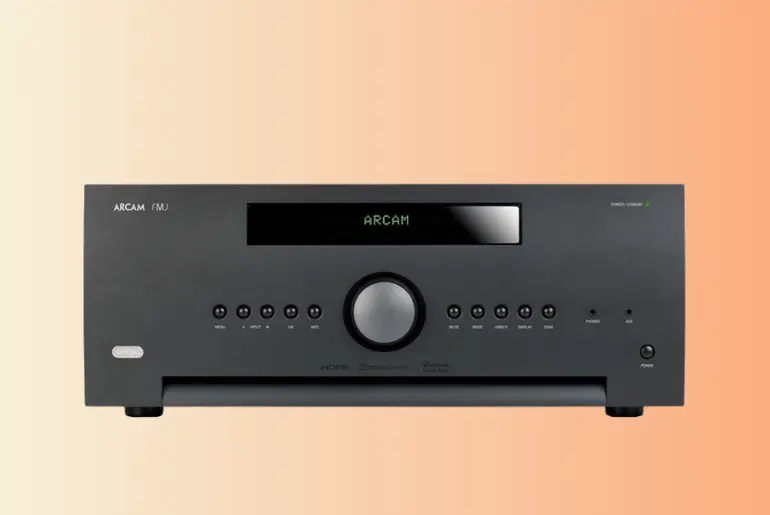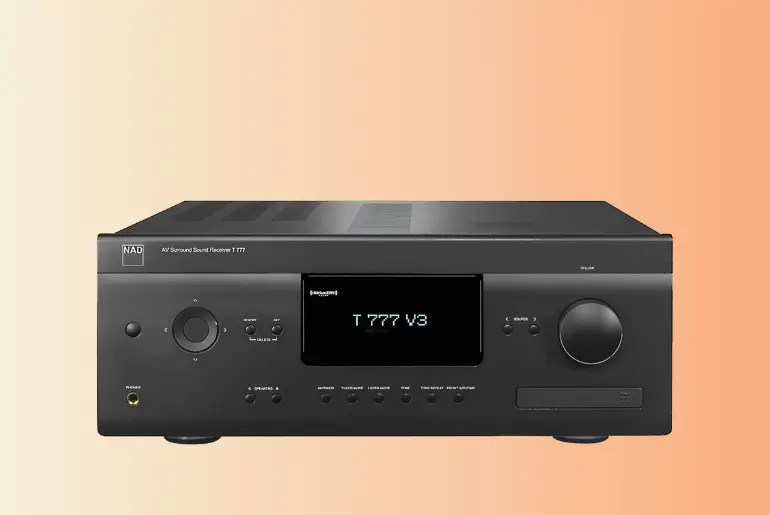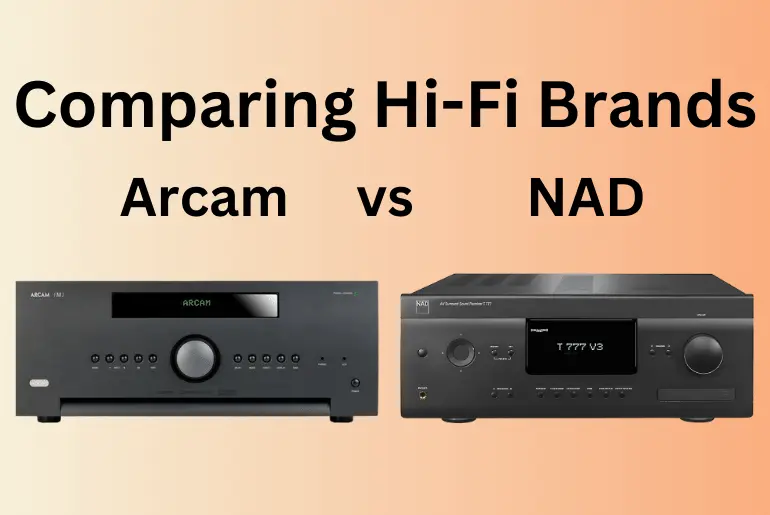When it comes to building a top-notch hi-fi system, selecting the right brand is crucial. One must consider various factors such as features, specifications, and, most importantly, reliability. In this article, we’ll explore the battle between two hi-fi heavyweights: Arcam and NAD. Both brands offer exceptional audio equipment, but which one truly reigns supreme?
Post Contents
Key Features and Specifications of Arcam
Arcam is renowned for its commitment to delivering high-quality audio experiences. The Arcam AVR390, one of their flagship models, boasts impressive features. With its Dolby Atmos 7.1.4 capability, this receiver provides an immersive surround sound experience. Additionally, its compatibility with 4-ohm or higher impedance speakers ensures versatility in speaker selection.

The AVR390 offers seamless connectivity with various sources, allowing you to effortlessly switch between different audio inputs. Its sleek design and copper accents add a touch of elegance to any home theater setup. Moreover, Arcam’s reputation for delivering exceptional sound quality has garnered a loyal following among audiophiles.
Key Features and Specifications of NAD
NAD is another heavyweight in the hi-fi industry, known for its commitment to performance and sonic accuracy. The NAD T 777 V3, a popular model from their lineup, offers a comprehensive set of features. With its advanced room correction technology, powered by Dirac Live, the T 777 V3 ensures precise audio calibration to match your room’s unique acoustics.

This receiver delivers a robust power output, providing ample headroom for dynamic and detailed sound reproduction. NAD’s emphasis on engineering excellence is evident in their 4-ohm speaker compatibility, allowing for a wide range of speaker options. Furthermore, the T 777 V3’s sleek design and intuitive user interface make it a delight to use.
Differences Between Arcam and NAD
Now that we have an overview of the key features and specifications of both brands, let’s examine the differences that set Arcam and NAD apart. One crucial aspect to consider is reliability. While Arcam has faced some criticism in the past for its older models, the user reviews indicate that NAD has a strong reputation for producing reliable and durable receivers.
User feedback often provides valuable insights into a brand’s reliability. In this case, users have shared positive experiences with NAD, highlighting its robust performance and consistent reliability. On the other hand, some users have expressed concerns about Arcam’s reliability based on past experiences with older models. However, it’s important to note that these experiences might not reflect the current state of Arcam’s products.
Pros of Arcam
- Impressive sound quality. Arcam receivers are renowned for their exceptional audio performance, delivering rich, detailed, and immersive sound experiences.
- Compatibility with 4-ohm or higher impedance speakers. This flexibility allows you to choose from a wide range of speakers to suit your audio preferences.
- Sleek design with copper accents. Arcam receivers boast a stylish aesthetic that adds a touch of elegance to your home theater setup.
- Dolby Atmos 7.1.4 capability. With Arcam, you can enjoy a truly immersive surround sound experience, bringing movies and music to life.
Cons of Arcam
- Reliability concerns. Some users have reported issues with older Arcam models, raising concerns about the brand’s overall reliability. However, it’s worth noting that newer models may have addressed these issues.
- Limited availability of specific technical information. Finding detailed specifications, such as 4-ohm load capability, may require more extensive research and may not be prominently advertised.
Pros of NAD
- Strong reputation for reliability. NAD has built a solid reputation for producing reliable and durable receivers, giving you peace of mind when investing in their audio equipment.
- Advanced room correction technology. NAD receivers, powered by Dirac Live, offer precise audio calibration tailored to your room’s acoustics, resulting in optimal sound performance.
- Robust power output. NAD receivers deliver ample power, allowing for dynamic and detailed sound reproduction, and providing headroom for demanding audio passages.
- User-friendly interface and sleek design. NAD receivers are designed with ease of use in mind, featuring intuitive interfaces and stylish aesthetics.
Cons of NAD
- Limited availability of specific technical information. Similar to Arcam, finding certain detailed specifications, such as explicit 4-ohm load ratings, may require additional research as they may not be prominently advertised.
- Higher price range. NAD receivers often come with a higher price tag compared to some other mainstream brands. However, the quality and performance they offer justify the investment for many audio enthusiasts.
User’s Positive Experience with NAD and the Negative Experience with Arcam Model
While reliability is a crucial factor, considering individual experiences is equally essential. One user shared a positive experience with NAD, praising its sound quality and the availability of customer support. This highlights the brand’s commitment to customer satisfaction and their dedication to providing reliable products.
Conversely, another user shared a negative experience with an older Arcam model, recounting the need for multiple repairs. Such experiences can be disheartening, especially when a reliable receiver is essential for uninterrupted enjoyment of your audio system. However, it’s worth noting that newer models may have addressed these issues, and Arcam continues to be recognized for its exceptional sound quality.
Arcam vs NAD: Which is Better?
Choosing between Arcam and NAD ultimately depends on your specific needs and priorities. Both brands have their strengths and loyal followings. Arcam excels in delivering impressive sound quality and compatibility with 4-ohm or higher impedance speakers. Their receivers offer immersive surround sound experiences, making them a top choice for audio enthusiasts.
On the other hand, NAD’s reputation for reliability and engineering excellence is highly regarded. With their advanced room correction technology and robust power output, NAD receivers provide accurate and captivating sound reproduction. Their commitment to customer satisfaction and durability further enhances their appeal.
When making your decision, it’s crucial to consider factors such as your preferred sound signature, specific feature requirements, and your budget. Additionally, conducting further research, reading professional reviews, and even auditioning the receivers whenever possible can provide valuable insights to inform your choice.
Conclusion
In the battle of Arcam vs NAD, it’s challenging to declare an outright winner. Both brands offer exceptional audio equipment with unique strengths. Arcam impresses with its sound quality and speaker compatibility, while NAD shines with its reliability and engineering prowess. Ultimately, it comes down to personal preferences and priorities.
Regardless of the brand you choose, both Arcam and NAD are committed to providing high-quality audio experiences. With their dedication to innovation and audio excellence, either brand will elevate your hi-fi system to new heights. So, take your time, weigh the options, and make an informed decision based on what matters most to you.
Building a hi-fi system is an exciting journey, and with either Arcam or NAD as your guide, you’re sure to achieve audio nirvana.

